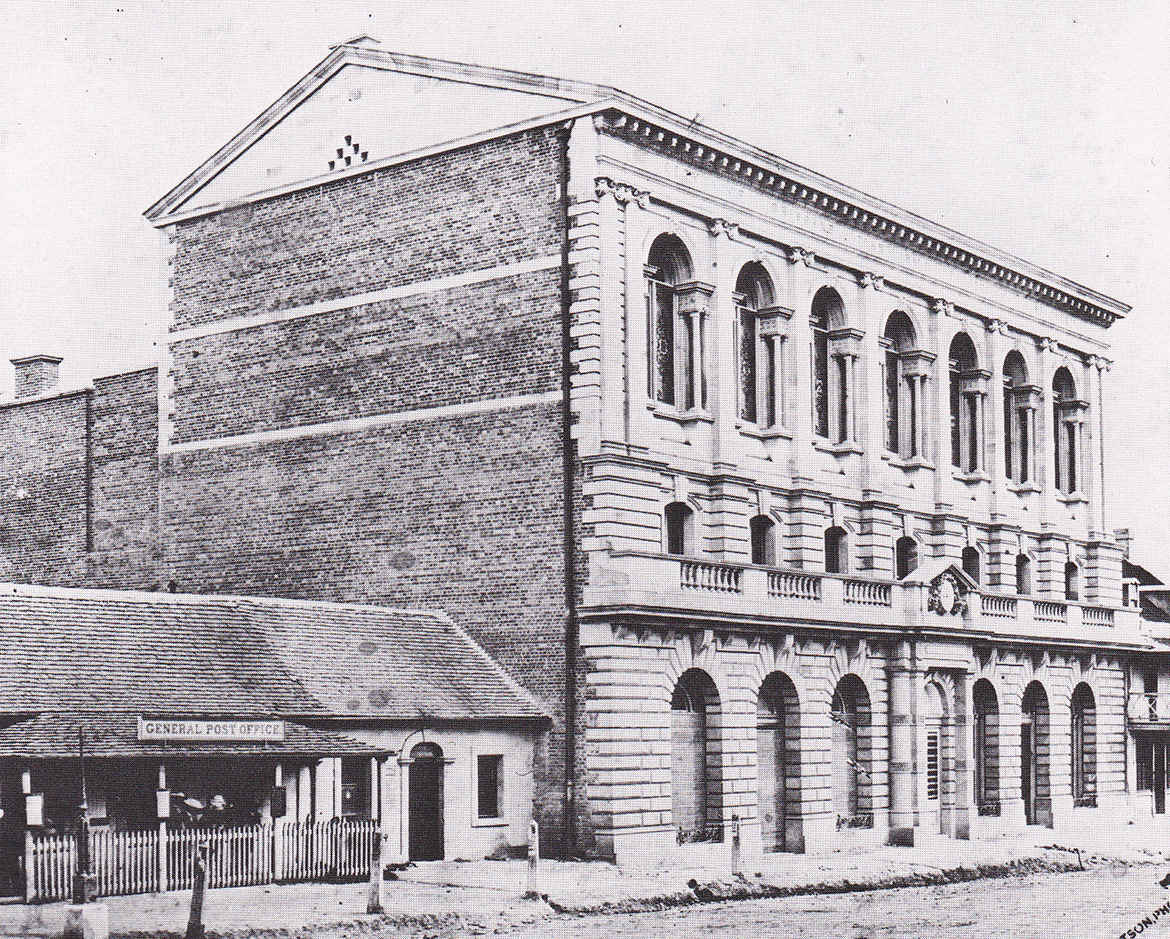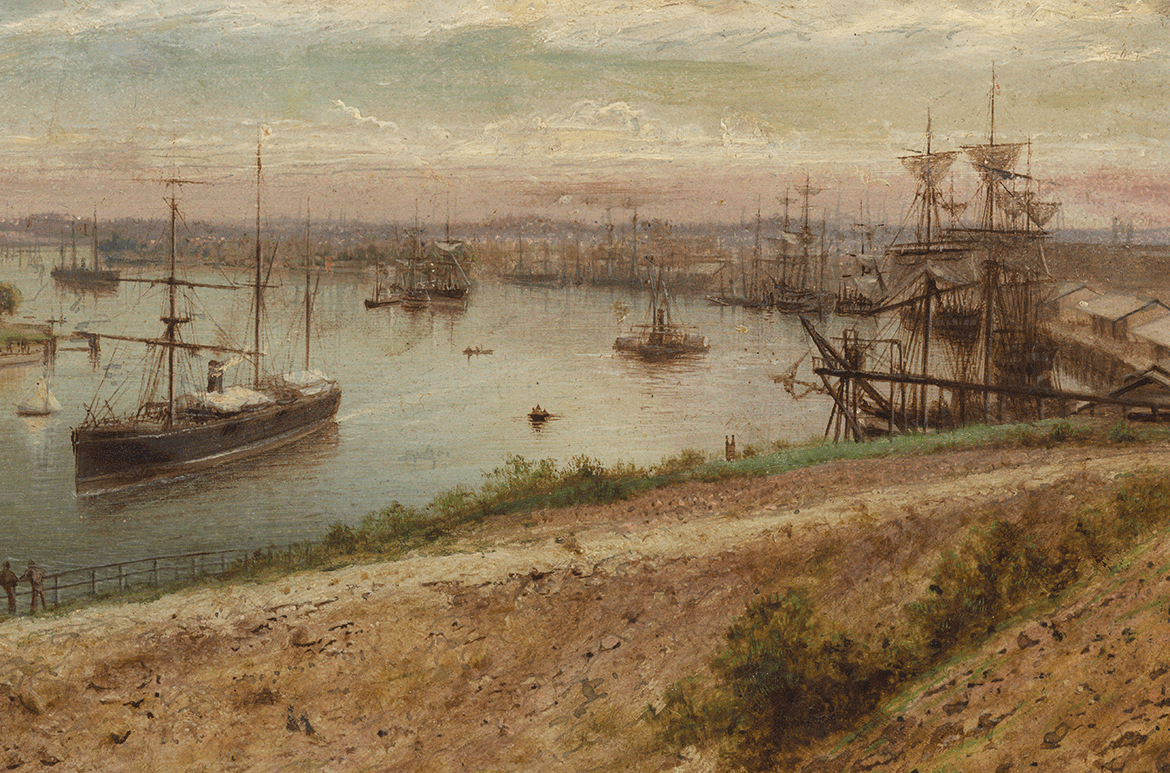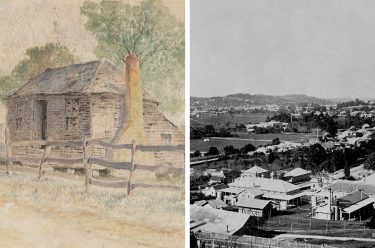The suburb of Kingston, in the City of Logan to the south of Brisbane, was named after one of the first European land owners, Charles and Harriet Kingston. Kingston and his family arrived in Australia from England in 1857 and eventually the couple took up a selection of Crown land in 1872. Early industry was timber, supplying the local sawmill, and once enough land was cleared, expanding to farming of cotton and sugar, then branching out to dairy and fruit groves with the Kingston’s specialising in grapes and wine.
The Kingston’s successfully developed their property and then enjoyed even greater prosperity when the railway line from South Brisbane reached the area by 1885. In October that year, 72 subdivided blocks of land named ‘Kingston Railway Station Estate’ were advertised to be auctioned. A poster map advertising the auction shows that the blocks were close to the station and a selling feature were the picturesque views from both the railway and the estate.
The first railway in Brisbane was built in 1879, when the line from the western interior was extended to the city from Ipswich to Roma Street Station on the opposite side of the Brisbane River. South Brisbane Station on the corner of Melbourne and Grey Streets — originally known as Melbourne Street Station until 1891 with the opening of the current building — was intended as a temporary terminus, pending an extension of the line across the river, however this was not implemented until 1978 via the Merivale Bridge into Roma Street.
Melbourne Street Railway Station c.1891

Kingston Railway Station Estate sale by auction poster 1885



When the Kingston’s returned from a visit to England in 1888, local artist Oscar Friström was asked to record their success with Kingston Estate, South Coast Line 1888 (illustrated). The family went on to build ‘Kingston House’ overlooking the railway station in 1890, which with its large ballroom and tennis court, became the social centre for the district. That same year, the township was officially named Kingston, formalised by the Surveyor General, however the name was already in use after the railway went through.
Oscar Friström ‘Kingston Estate, South Coast Line’ 1888

Trains at Roma Street Station c.1880-90

Detail of the train depicted in ‘Kingston Estate, South Coast Line‘

Oscar Friström
A self-taught artist, Carl Magnus Oscar Friström (1856-1918) produced this high-vantage view of the Kingston’s estate featuring a circular paddock with post-and-rail fence and an orchard of fruit trees as cattle graze in a meadow nearby. A band of thick scrub forms a uniform barrier in the background confirming that the productivity of orchard and farm have been won from taming the Australian bush.
Born on the island of Sturkö off the south coast of Sweden, after Friström arrived in Australia he settled in Brisbane in 1884 where he first exhibited landscapes and recorded clients properties, but he soon became recognised as Queensland’s premier portrait painter, and turned to producing portraits of his clients and social identities rather than their properties. In 1885, he went into a partnership with the Elite Photo Co., and four years later opened his own studio in Adelaide Street and then in Queen Street by the following decade. During the 1890s, he was the art master at All Hallows’ Convent School.
Friström is an important figure in the history of Queensland art as he was, with LWK Wirth (1858 –1950) and Isaac Walter Jenner (1836-1902), co-founder of the Queensland Art Society in 1887 and a member of the Society’s first committee. The Queensland capital had few professional artists at the time and not until 1895 did the Queensland National Art Gallery open at temporary premises in the old Town Hall on Queen Street.
Queensland National Art Gallery, Brisbane Town Hall 1895

Oscar Friström c.1911

Brisbane in the late Nineteenth Century
Brisbane was proclaimed a municipality in 1859 and became the capital of the newly independent Queensland that same year, however it was not gazetted a city until 1902. Originally the neighbouring City of Ipswich was intended to be the capital, but it proved to be too far inland. Between 1881 and 1891 metropolitan Brisbane’s population grew from 37,000 to 100,000, and at the time Oscar Friström painted Kingston Estate, South Coast Line, Queensland’s first permanent Customs House (1886-89) opened in Queen Street to collect duties on imported products as Brisbane became a busy port city. As documented by JA (Joseph Augustine) Clarke and Isaac Walter Jenner (both illustrated), the Brisbane river had nearly continuous wharves surrounding the Customs House from Petrie Bight to the Botanical Gardens, and opposite from Kangaroo Point to the Victoria Bridge at South Brisbane where the railway wharves were a terminus for the South Brisbane railway line that extended to Kingston.
Customs House 1889

Joseph Augustus Clarke ‘Panorama of Brisbane’ 1880

Isaac Walter Jenner ‘Brisbane from Bowen Terrace, New Farm’ 1888

Curatorial extracts, research and supplementary material compiled by Elliott Murray, Senior Digital Marketing Officer, QAGOMA
#QAGOMA


